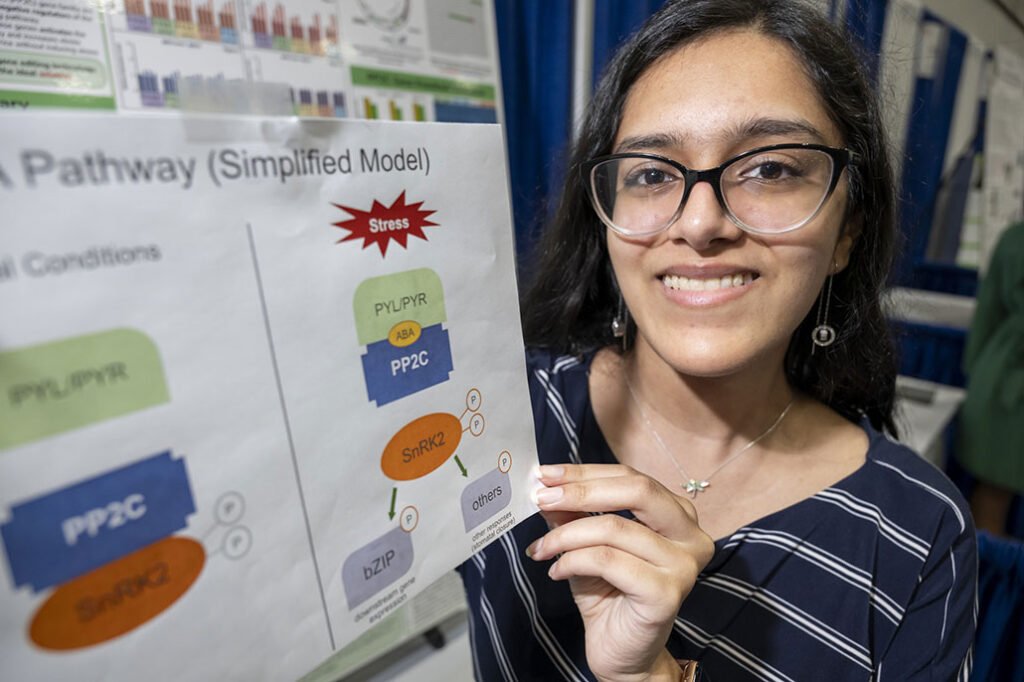ButSpeak.com
News which Matters.

New Jersey teen Nandini Rastogi uses CRISPR gene-editing to engineer a resilient rice plant, highlighting the potential of technology in combating climate challenges.
In a significant achievement for sustainable agriculture, an 18-year-old high school senior from New Jersey, Nandini Rastogi, has utilized gene-editing technology to develop a rice plant that is both more resilient and easier to grow. This innovation, showcased at the prestigious Regeneron International Science and Engineering Fair, represents a promising advancement in the ongoing effort to adapt agriculture to the challenges posed by climate change.

Rastogi employed CRISPR, a cutting-edge gene-editing tool that allows for precise alterations in the genetic makeup of organisms, to enhance specific traits in rice plants. The focus of her work was to activate the plant’s stress-response mechanisms continuously, rather than only in reaction to environmental pressures. Traditionally, rice plants would only elongate their roots in search of water during periods of drought. However, by keeping these growth-promoting processes active at all times, Rastogi’s engineered plants not only grew faster but also demonstrated increased resilience to adverse conditions.
The project was not without its hurdles. Due to stringent government regulations, Rastogi was unable to perform gene editing directly on live plants. Instead, she conducted her experiments on plant cells that had been removed from the rice plants. Despite this limitation, her results were promising. The cells she modified showed the activation of certain proteins, indicating that, if applied to live plants, these edits could significantly improve the plants’ ability to withstand stress.
This breakthrough comes at a critical time as the agricultural sector grapples with the impacts of pollution, rising global temperatures, and erratic weather patterns. Traditional farming regions are becoming increasingly inhospitable to crops, with some areas now too hot for cultivation and others suffering from severe droughts. Scientists worldwide are turning to gene-editing technologies like CRISPR to create new varieties of crops that can endure these changing conditions. Examples include drought-resistant fruits, water-efficient tomatoes, and frost-tolerant plants.
While it remains crucial to address the root causes of climate change—namely, by reducing reliance on fossil fuels and transitioning to renewable energy sources like wind and solar—innovations like Rastogi’s offer a glimpse into how agriculture might adapt in the near term. Her work not only highlights the potential of gene-editing technology but also underscores the vital role that young scientists are playing in the quest for sustainable solutions to global challenges.